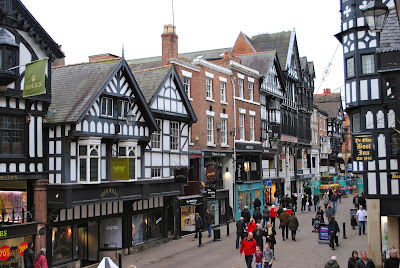Our second day of winter sun in Provence found us starting our morning in the Roman capital of Provence, the town of Arles. Situated at the crossroads of trade between Italy and Spain, as well as the Mediterranean and northern Gaul, it reached its pinnacle under the reigns of three great Emperors, Augustus, Antoninus, and Constantine. The amphitheater still stands today, as well as remnants of the theater, forum and an aqueduct, as a testimony to the glory it once earned.
Built around the end of the first century AD, the amphitheater would hold as many as 20,000 people, who would come for the chariot races and bloody hand-to-hand battles.
Today it showcases bullfights, as well as plays and concerts.
Arles is also known to be the home of Vincent Van Gogh during some of the last years of his troubled life when he was so prolific. While living here, he painted over 300 pictures, some of them his most famous ones. He dreamed of starting an artists' colony in Arles, but most of his time here, he was struggling with his own demons. He often painted scenes of Arles such as the crowds at the bullfights at the amphitheater.
At the heart of the town, we found ourselves at the Place de la République, where stands an obelisk from the ancient forum, as well as the
Eglise St.Trophime.
Built during the 11th-12th century, the portal with its classic Romanesque
decoration really drew us in. Fascinating to imagine it lasting all this time.
And now for my favorite part--the cloisters of the church. This part of the church was built for the use of the canons, the priests who attended the bishop and watched over the property.
The canons lived the life of monks in a common dormitory, and behind a wall separating them from the city. Quiet and solitude.
We continued wandering through the streets of Arles,
where we found the very cafe that Van Gogh painted
in The Café Terrace on the Place du Forum.
Gauguin came to see Van Gogh in Arles where the two painted side by side for a spell, before their relationship began to deteriorate. The two argued often and one day when Van Gogh was feeling particularly despondent, he confronted Gauguin with a razor blade, causing him to flee. At that point, Van Gogh retreated to a brothel where he cut off the bottom portion of his ear lobe, and handed it in tissue paper to a prostitute, asking her to keep it for him. Soon after he was hospitalized in the Hospital of
Arles, seen above, where he continued suffering on and off with hallucinations.
While there, he painted the courtyard and a few other paintings, before being committed to an insane asylum near St. Rémy de Provence, just across from the ruins of Glanum.
We carried on our trip that day to the Pont du Gard, a fascinating structure spanning the Gardon River.
It is part of a 50 kilmeter aqueduct which supplied the Roman town of Nimes with fresh water.
It is considered an architectural masterpiece, and to think it was built in the first century AD. I never cease to be amazed at the technological advance of the Romans. For those of you who have been there, you know how crowded the aqueduct typically is, but on that glorious sunny day, we were the only ones crossing the bridge.
One thing I was constantly reminded of during our trip was the attraction and draw that the light of this region had on artists, especially in the Impressionist era. As just an amateur photographer, I was intrigued by the beauty of the sunny January skies. Hope you enjoyed this little trip by photos, since I have a little more of Provence to share with you in the next blog post coming soon.












































































